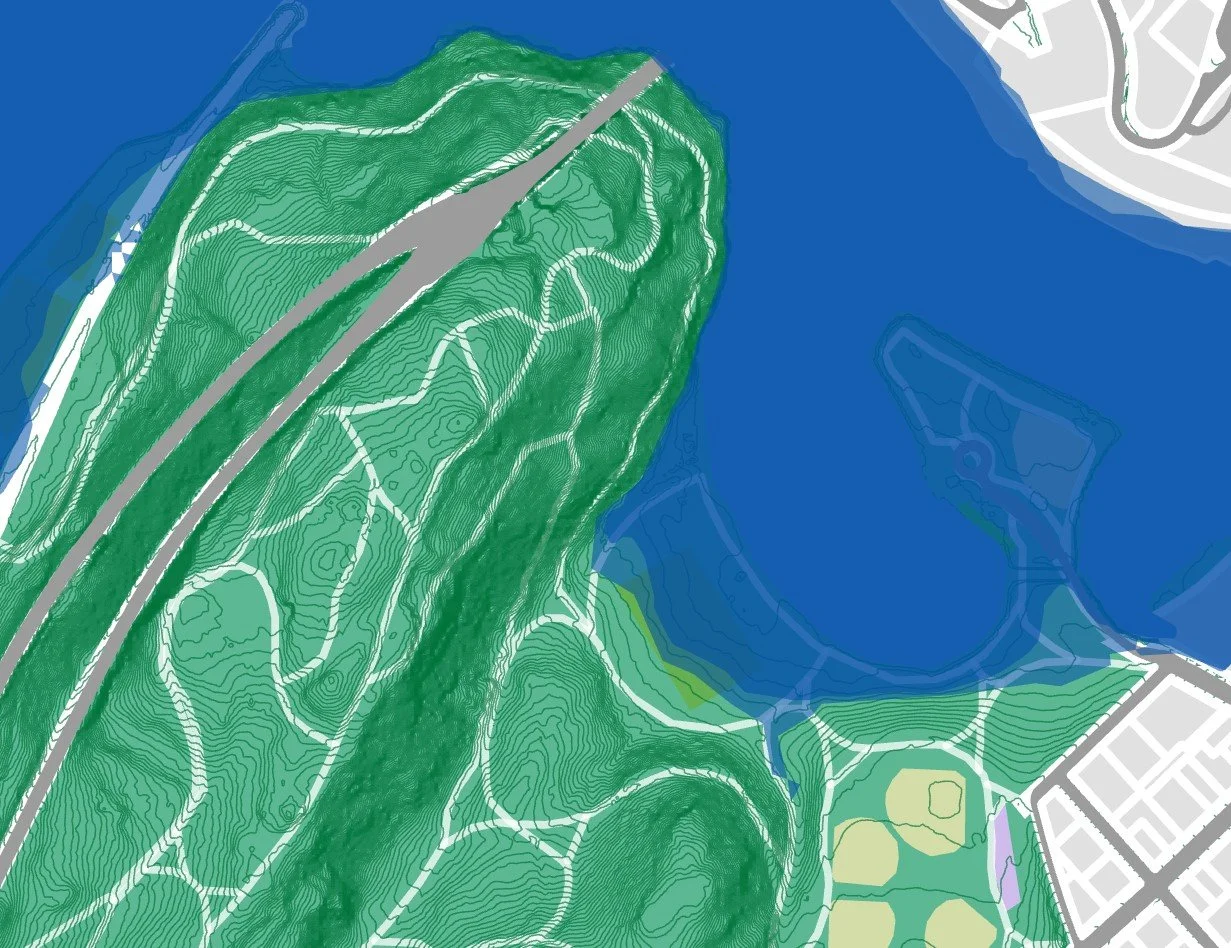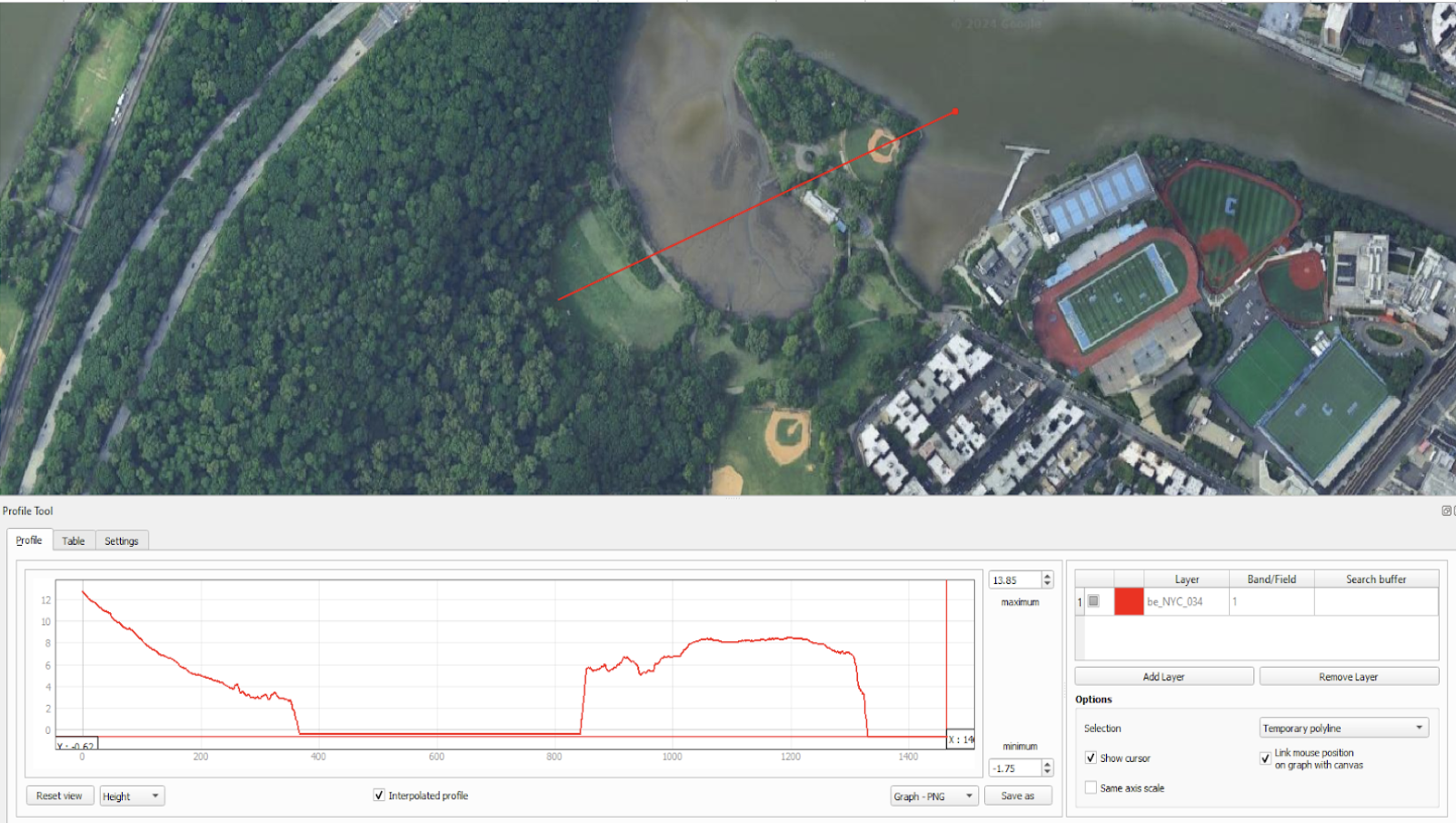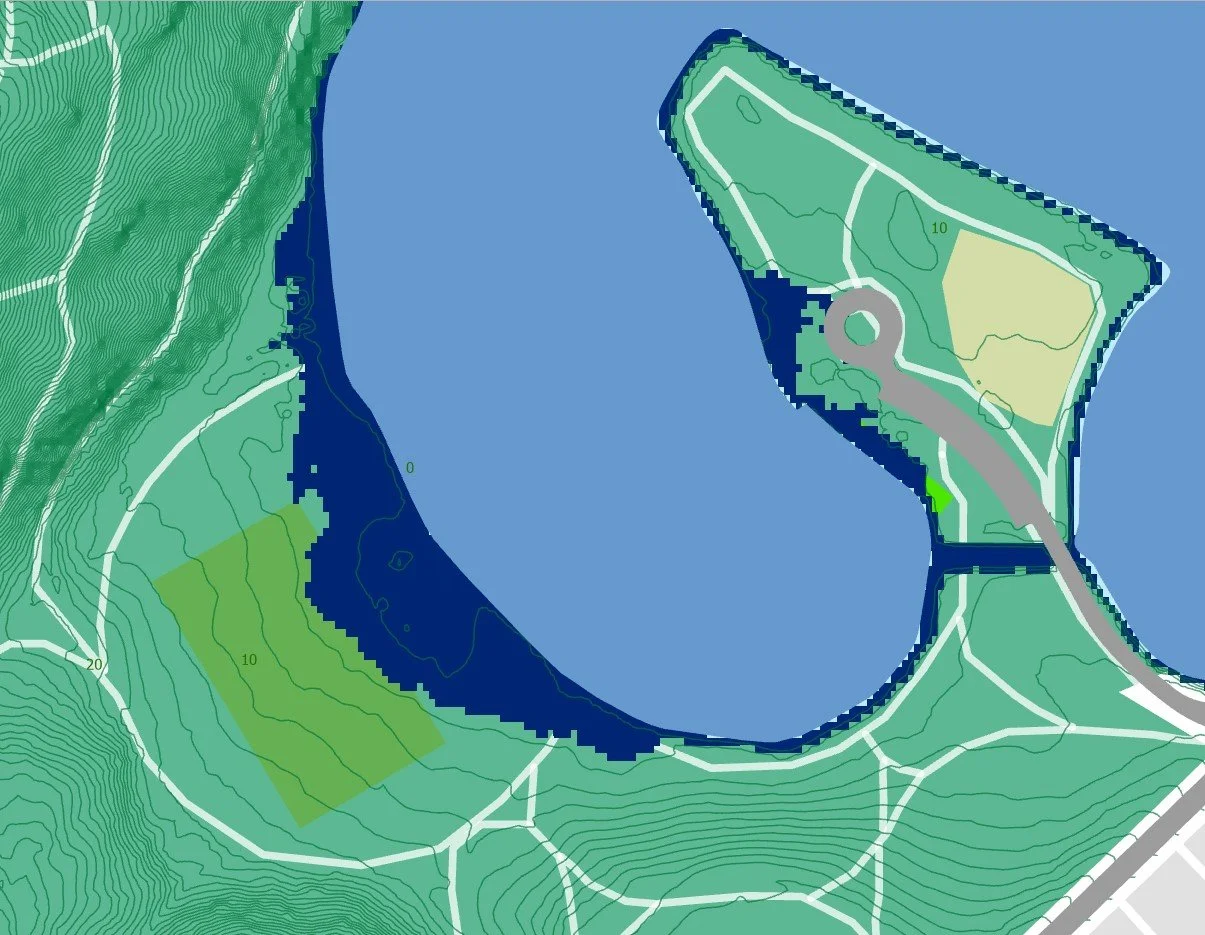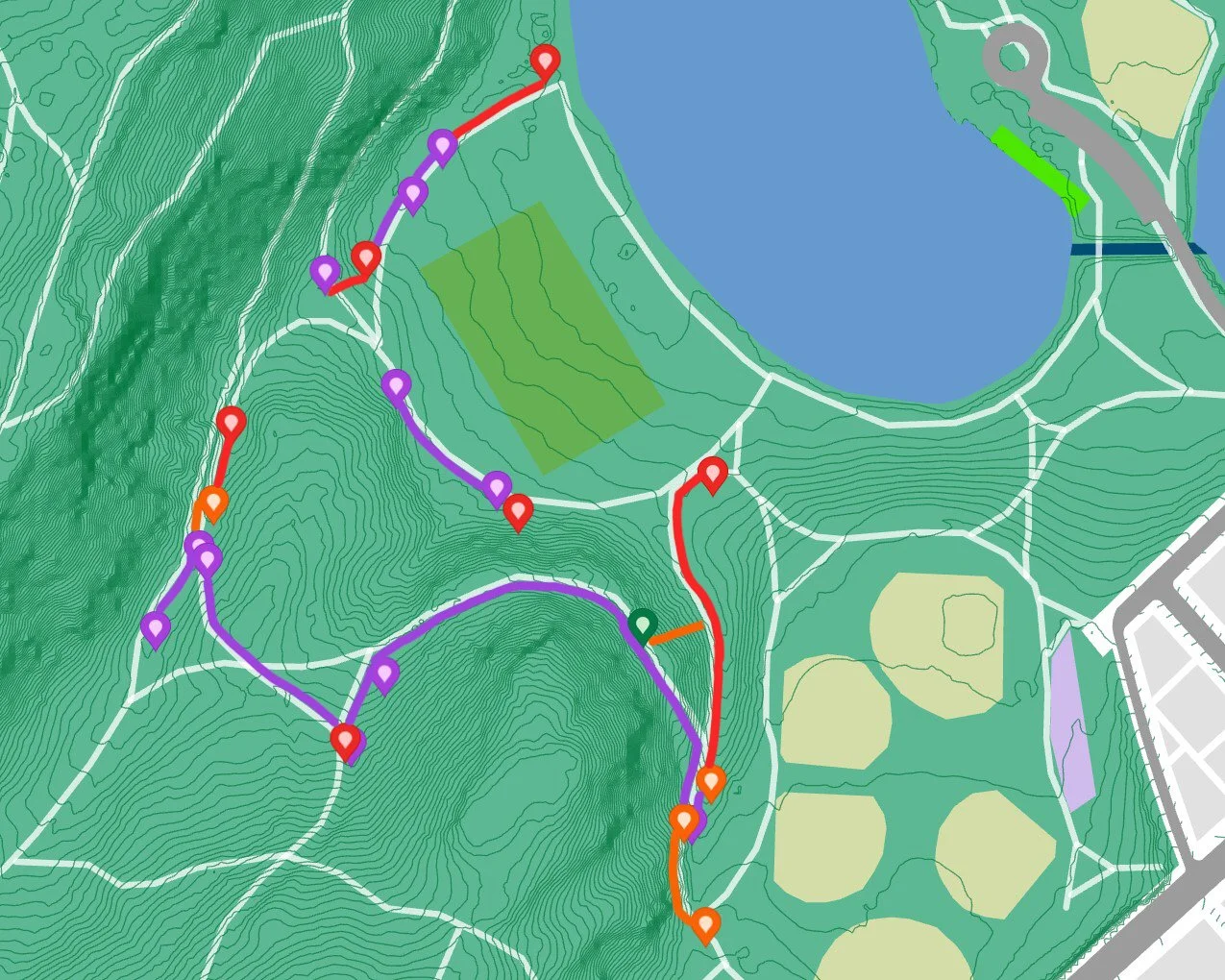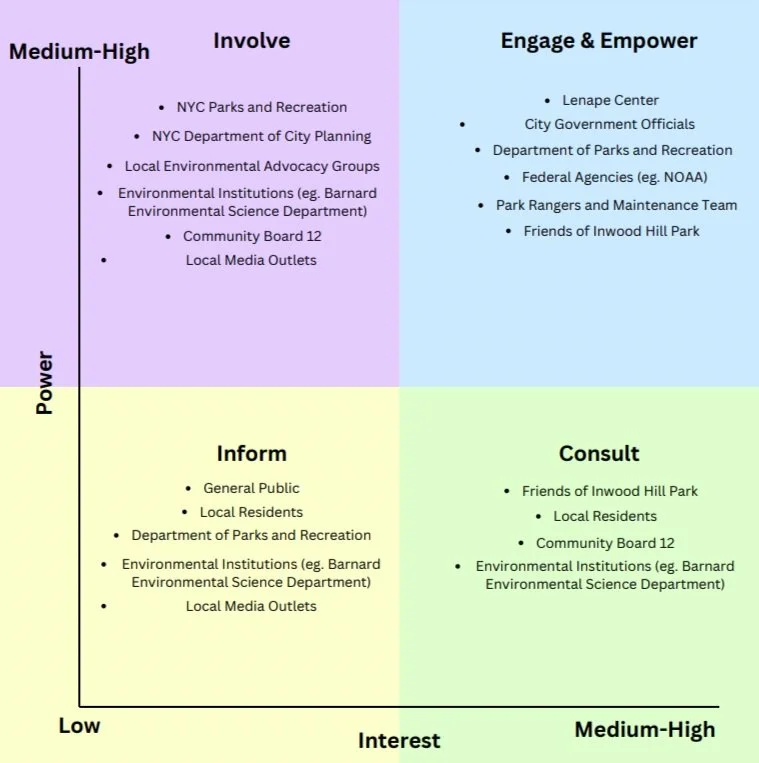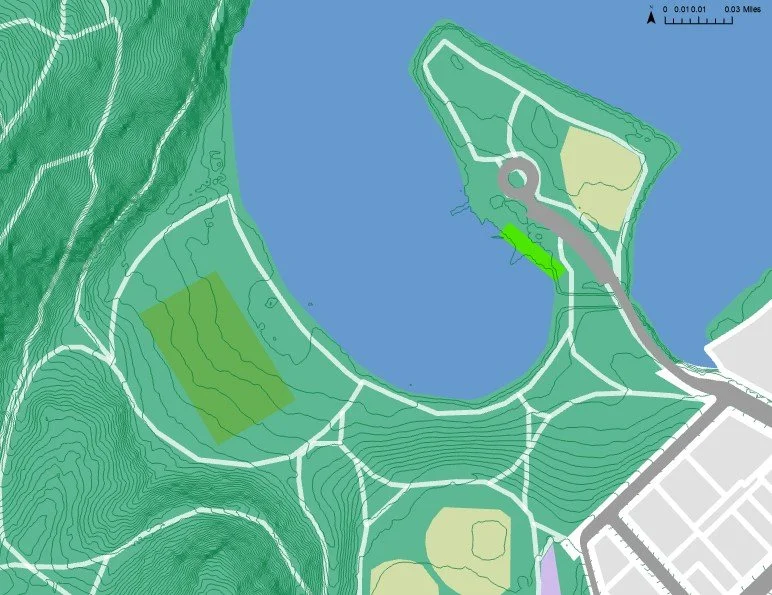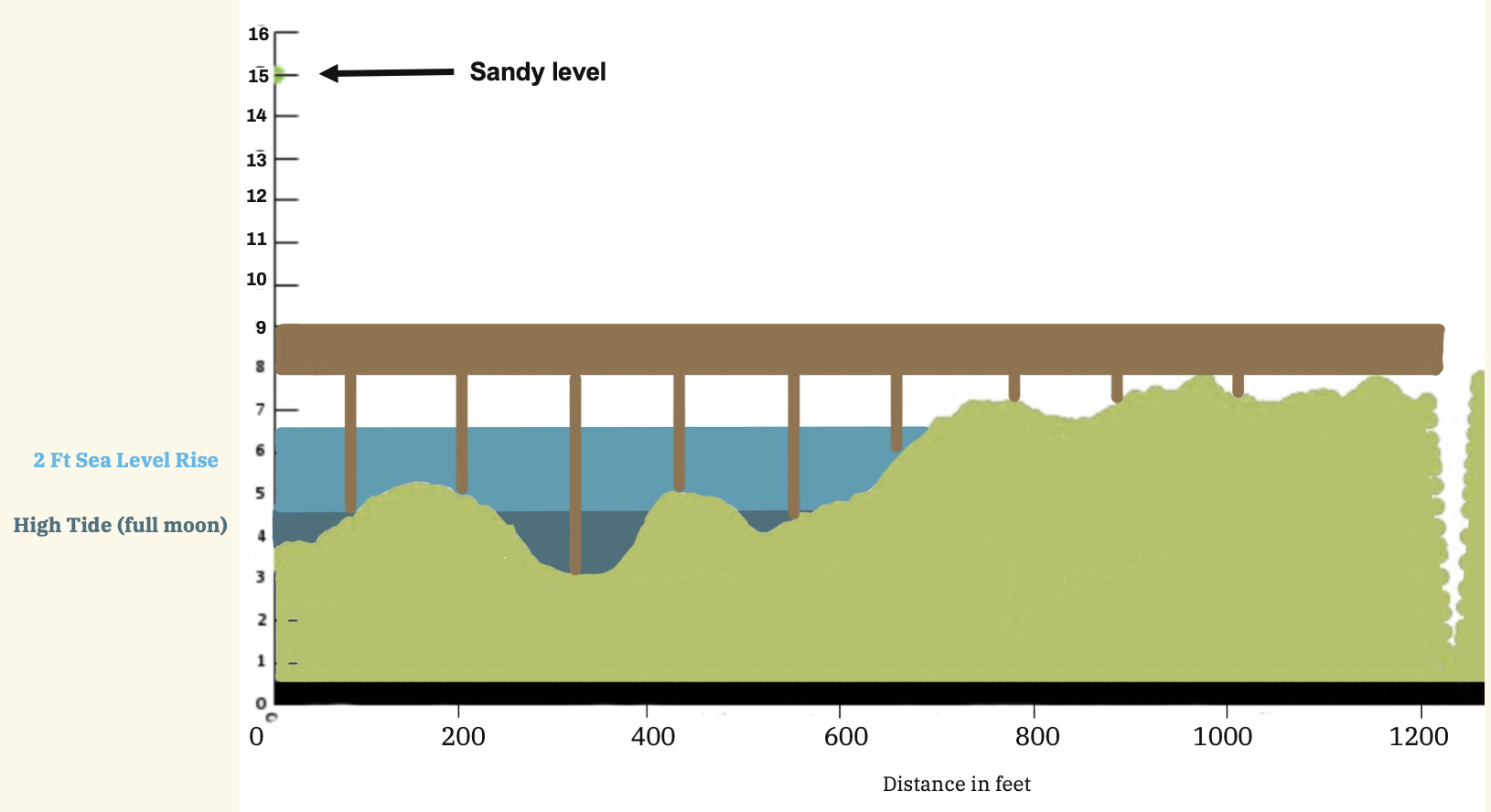NYC Parks x Barnard College Presents
A Coastal Resilience Project for Inwood Hill Park
By Workshop in Sustainable Development (Spring 2024)
Managing Flooding & Erosion Challenges in Inwood Hill Park
Barnard College, Columbia University | Workshop in Sustainable Development | December 2024
Client: NYC Parks
Collaborators: Meadow Kapczynski, Eve Girzadas, Yezena Endeshaw, Caroline Beisher, Lucy Onderdonk, Dani Rivera-Agudelo, Grace Ding
Introduction & The Challenge
The Problem: Flooding, Erosion, and Climate Resilience
Inwood Hill Park, Manhattan’s last natural forest and salt marsh of the Lenape Peoples, faces mounting threats from climate change. Rising sea levels, extreme precipitation events, and outdated infrastructure have left the park vulnerable to flooding and erosion, compromising its ecological health and accessibility. Gaelic Field and its surrounding pathways are frequently submerged, negatively impacting community recreation and park usability.
Project Overview
Commissioned by NYC Parks, our interdisciplinary team at Barnard College conducted an in-depth analysis of Inwood Hill Park’s environmental conditions. We sought to provide data-driven recommendations for climate resilience, balancing ecological sustainability with community needs.
My Role: Project Manager
As the project manager, I facilitated collaboration among stakeholders, oversaw research and strategy development, and synthesized findings into actionable solutions. While I did not design the graphics, I ensured that all visual materials effectively communicated our findings.
Key Deliverables:
Climate modeling and environmental assessments
Design solution
Stakeholder engagement strategies
Final report and presentation to NYC Parks
Understanding the Landscape
Climate models, elevation profiles, drainage inspections & case studies
Proposed Solution
An Elevated Boardwalk: Replacing the submerged pathway near Gaelic Field with a raised boardwalk would allow marsh migration while maintaining accessibility. This approach mitigates flooding by allowing the marsh to act as a natural buffer, absorbing storm surges and reducing the impact of sea level rise. The elevated structure ensures that visitors can continue to enjoy the park while minimizing environmental disturbance.
Why?
Expanding salt marshes is a crucial nature-based solution for mitigating flooding and adapting to climate change. Marshes act as natural buffers that absorb storm surges, reduce wave energy, and filter runoff, preventing inland flooding and erosion. As sea levels rise, allowing marshes to migrate inland ensures that they can continue to provide these protective functions rather than being drowned out by encroaching water levels.
An elevated boardwalk, replacing the submerged pathway near Gaelic Field, would facilitate marsh expansion while maintaining accessibility for park-goers. By lifting pedestrian traffic above sensitive wetland areas, the boardwalk would prevent soil compaction and habitat destruction while ensuring that rising water levels do not disrupt public access. This dual-purpose infrastructure supports both ecological resilience and recreational needs, reinforcing the park’s role as a sustainable urban green space.
Stakeholder Engagement & Community Impact
Collaborative Decision-Making
Stakeholder involvement strategies was central to our approach. Key groups included:
NYC Parks & Community Board 12 (Government oversight and funding allocation)
Friends of Inwood Hill Park & Local Residents (Advocacy for accessibility and usability)
Lenape Center (Ensuring Indigenous heritage is respected in restoration efforts)
Challenges & Considerations
Community Resistance: Some park-goers expressed concerns about altering recreational spaces, emphasizing the need for public education on ecological benefits.
Funding Constraints: Many resilience strategies require long-term investment, necessitating flexible funding approaches.
Conclusion & Impact
Outcome: A Blueprint for Sustainable Parks
Our final recommendations provide a scalable model for urban parks facing similar climate threats. By integrating ecological restoration with community-centered design, our solutions enhance resilience while preserving accessibility.
Key Takeaways:
Data-Driven Decision-Making: Climate modeling and site analysis informed all recommendations.
Nature-Based Solutions Over Traditional Infrastructure: Ecological approaches, such as marsh expansion, offer long-term benefits compared to engineered solutions alone.
Engagement Is Essential: The success of any urban resilience project hinges on collaboration with local communities and stakeholders.
Final Thoughts
This project reaffirmed the importance of adaptive planning in urban environmental management. By balancing nature-based interventions with infrastructure adaptation, Inwood Hill Park can remain a vital green space for future generations.
Next Steps: NYC Parks is reviewing our recommendations for phased implementation, with potential funding from environmental grants and city budgets. Continued monitoring and community involvement will be key to ensuring long-term success.
Contact: Sarina Malik – Project Manager
Email: sgm2163@barnard.edu
High Tide & Storm Surge Risk: Projected sea level rise of 3 feet by 2090 will submerge major sections of the park, including the frequently used Gaelic Field.
Elevation Profiles: Water predicted to flow to the marsh water body from higher elevations, exaserbatting the flooding of marsh
Erosion and Marsh Migration: As sea levels rise, the salt marsh naturally seeks to migrate inland. However, existing infrastructure blocks this process, exacerbating flooding.
Drainage System Failures: Blocked (purple), non-functional (red) and leaf-covered (orange) channels prevent effective water management, worsening flood conditions.
Case Study: Back Cove, Portland, Maine
We examined Back Cove’s flood resilience strategies, such as elevated boardwalks and marsh expansion, to inform solutions for Inwood Hill Park. This case study demonstrated the effectiveness of nature-based interventions over traditional hard infrastructure.
